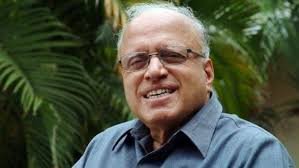Father of Yellow Revolution: Dr. M. S. Swaminathan’s Legacy
The Yellow Revolution is a significant milestone in India’s agricultural history, primarily focused on boosting oilseed production. Dr. M. S. Swaminathan, often referred to as the “Father of the Yellow Revolution,” played a pivotal role in transforming India’s agricultural landscape, especially concerning oilseed production. His visionary leadership and research in the field of agriculture have helped India achieve self-sufficiency in oilseeds, reducing the country’s dependence on imports.
What is the Yellow Revolution?
The Yellow Revolution refers to the rapid growth in the production of oilseeds, particularly mustard and sunflower, which led to the rise of India as one of the largest producers of edible oils. The term “Yellow Revolution” was coined because of the golden color of mustard flowers that symbolize the increase in oilseed production across the country.
Dr. M. S. Swaminathan’s Contribution
Dr. M. S. Swaminathan, an agricultural scientist, brought groundbreaking changes to India’s agricultural sector. He introduced high-yielding varieties of oilseeds and advanced farming techniques, which played a crucial role in the Yellow Revolution. His advocacy for hybrid seeds, better irrigation systems, and modern agricultural practices helped increase oilseed productivity, making India self-reliant in oil production.
Significance of Yellow Revolution for India’s Economy
The Yellow Revolution helped India shift from being an oil importer to an oil producer. Prior to this, India was heavily dependent on imports for edible oils. By increasing domestic production, the Yellow Revolution not only made the country economically self-sufficient but also boosted the incomes of farmers across the nation. Furthermore, it contributed to the overall growth of India’s agricultural economy and strengthened food security.

Why this News is Important
Impact on India’s Agricultural Self-sufficiency
The Yellow Revolution was a game-changer for India, making the country self-sufficient in edible oils. Before the revolution, India had to import a significant amount of edible oils to meet its domestic demand. This revolution minimized dependence on foreign imports, helping the country save foreign exchange. It also contributed to the sustainable growth of India’s agricultural sector.
Economic Growth and Rural Empowerment
Dr. M. S. Swaminathan’s efforts during the Yellow Revolution empowered farmers, especially in rural areas, by enhancing their agricultural productivity. The increase in oilseed production meant higher income for farmers, which directly contributed to rural economic development. This also improved the livelihoods of those involved in the farming and food processing sectors.
Support to the Government’s Vision of “Atmanirbhar Bharat”
The Yellow Revolution aligns with the government’s current vision of making India “Atmanirbhar” or self-reliant, especially in the field of agriculture. By promoting sustainable practices and boosting domestic production, this revolution supports India’s journey toward becoming less dependent on external resources.
Promotion of Scientific Agricultural Practices
Dr. Swaminathan’s contribution is a testament to the importance of scientific research in agriculture. His work emphasizes how modern techniques and innovation in seed technology can revolutionize agricultural practices. His legacy continues to inspire young scientists and farmers to embrace research-driven farming methods.
Historical Context: Background of the Yellow Revolution
The Yellow Revolution did not emerge overnight. It was a result of several decades of research, policy initiatives, and practical changes in the agricultural landscape. In the 1970s, India faced an acute shortage of edible oils, which were primarily imported. The government, under the leadership of Dr. Swaminathan, began focusing on improving oilseed production, particularly mustard, sunflower, and groundnut. His efforts led to the introduction of high-yielding varieties, better agricultural practices, and advanced irrigation methods, all of which contributed to the success of the Yellow Revolution.
This revolution was crucial in the context of the Green Revolution, which focused on increasing food grain production. The Yellow Revolution, therefore, complemented the Green Revolution by diversifying India’s agricultural output and addressing the oilseed deficit. It also played a significant role in India’s food security and economic resilience.
Key Takeaways from Father of Yellow Revolution
| S. No. | Key Takeaway |
|---|---|
| 1 | Dr. M. S. Swaminathan is regarded as the “Father of the Yellow Revolution” due to his role in transforming India’s oilseed production. |
| 2 | The Yellow Revolution focused on increasing oilseed production, reducing India’s dependence on imports of edible oils. |
| 3 | India achieved self-sufficiency in edible oils, boosting both economic self-reliance and rural empowerment. |
| 4 | The revolution introduced high-yielding varieties of oilseeds, contributing to significant growth in agricultural productivity. |
| 5 | The Yellow Revolution aligns with India’s current vision of “Atmanirbhar Bharat,” supporting self-reliance in agriculture and food security. |
Important FAQs for Students from this News
1. Who is known as the Father of the Yellow Revolution in India?
Dr. M. S. Swaminathan is known as the Father of the Yellow Revolution due to his significant contributions in increasing oilseed production in India.
2. What is the Yellow Revolution?
The Yellow Revolution refers to the rapid increase in the production of oilseeds, primarily mustard, in India, which led to the country achieving self-sufficiency in edible oils.
3. How did Dr. M. S. Swaminathan contribute to the Yellow Revolution?
Dr. Swaminathan introduced high-yielding varieties of oilseeds, improved irrigation practices, and promoted scientific farming techniques, significantly boosting India’s oilseed production.
4. What was the economic impact of the Yellow Revolution on India?
The Yellow Revolution made India self-reliant in oilseed production, reduced the dependence on imports, and boosted the incomes of farmers, contributing to rural economic development.
5. How does the Yellow Revolution support India’s vision of “Atmanirbhar Bharat”?
By increasing domestic oilseed production, the Yellow Revolution supports India’s vision of self-reliance in agriculture, reducing dependency on foreign imports and improving food security.
Some Important Current Affairs Links















